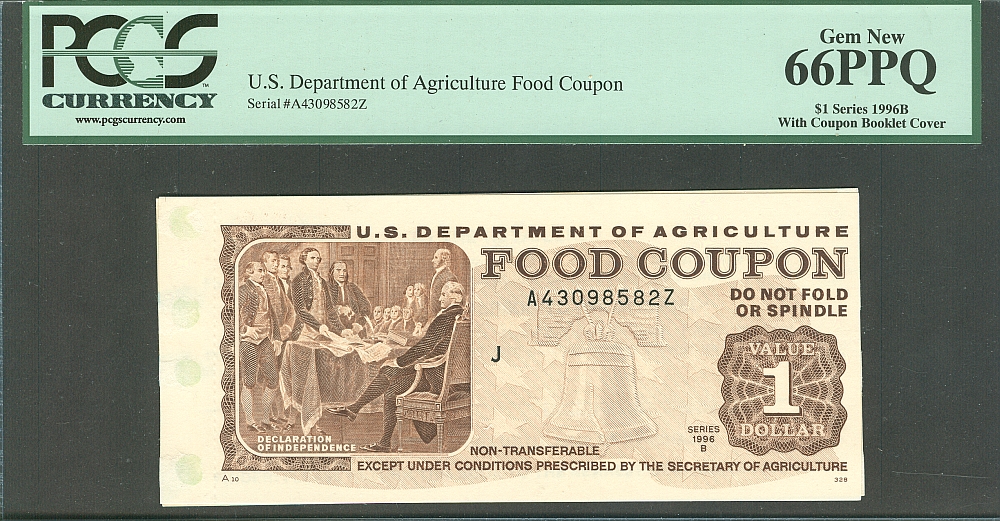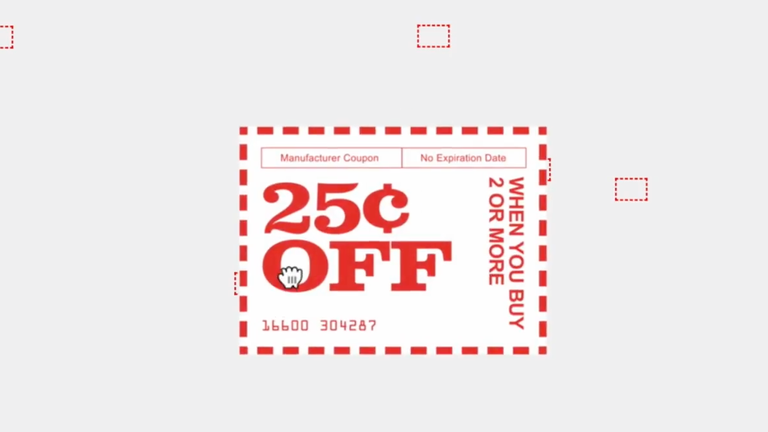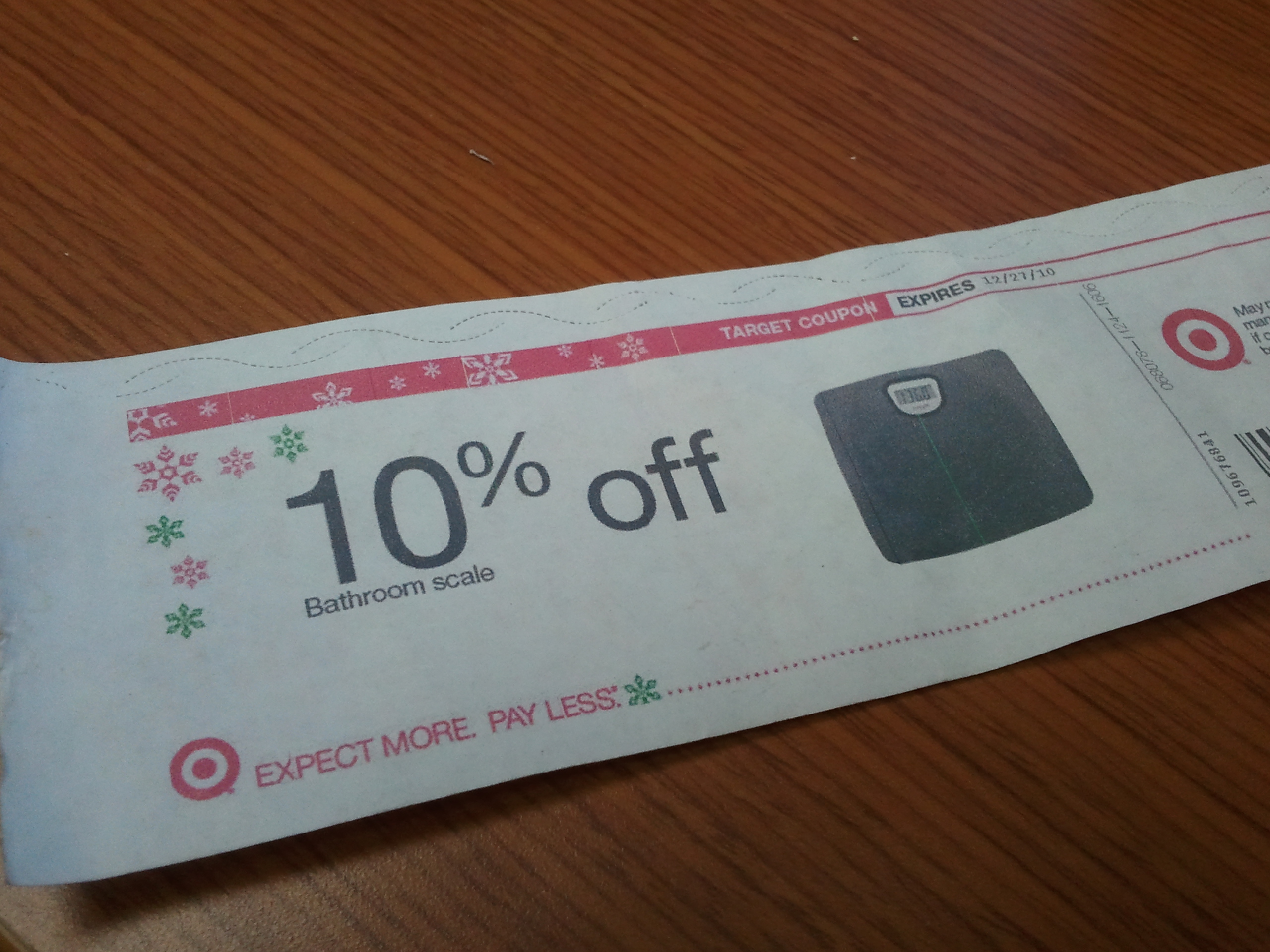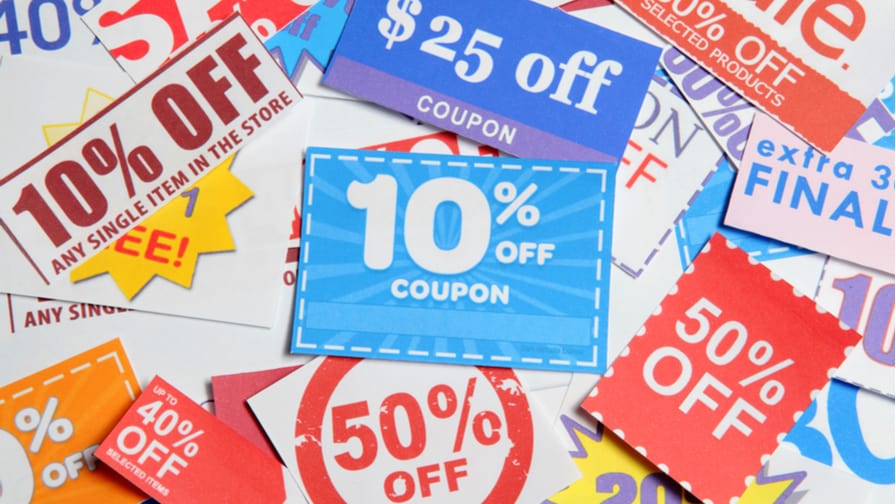The Rise Of Coupon Culture In America - A Thrifty Trend Revolutionizing Spending Habits
In recent years, the United States has witnessed a significant shift in consumer behavior, as more and more people are embracing the coupon culture. This thrifty trend, once associated with penny-pinching and frugality, has now become a mainstream phenomenon, shaping the way Americans shop, save, and spend. In this article, we delve into the nuances of coupon culture in America, exploring its origins, evolution, and the impact it has on both consumers and businesses.
The Birth Of Coupon Culture In America
In the late 19th century, businesses recognized the potential of coupons as a marketing tool. Handwritten tickets or tokens offering discounts on products were distributed, marking the birth of couponing in the United States. This innovative approach allowed companies to attract customers by offering a financial incentive, creating a win-win situation where consumers saved money, and businesses increased their sales. Initially, these coupons were relatively simple, serving as one-time offers for specific items.
The Great Depression
The 20th century brought significant changes to the coupon landscape. During the Great Depression, a period of economic hardship that gripped the nation, coupons became lifelines for struggling families.
With resources scarce and budgets stretched thin, coupons provided a means to obtain essential goods at affordable prices. Manufacturers and retailers alike embraced couponing as a way to help families make ends meet. This era marked a turning point, as coupons transitioned from a promotional gimmick to a vital means of survival for many households.
Evolution Into A Sophisticated System
As the American economy recovered, the coupon culture continued to thrive, evolving into a sophisticated system of savings. Coupons diversified, ranging from discounts on grocery items to clothing, appliances, and even services.
Print media, including newspapers and magazines, became popular platforms for coupon distribution, reaching a broad audience. Savvy shoppers eagerly awaited the Sunday newspaper, where a plethora of coupons awaited, each representing a potential saving on everyday necessities.
Technological Advancements
With the advent of technology, especially the internet, coupon culture underwent a revolutionary transformation. The digital age saw the rise of online coupon websites and mobile applications, making discounts accessible to anyone with a smartphone or computer. This shift democratized coupon usage, allowing people from all walks of life to access a wide array of discounts. Digital coupons also provided businesses with valuable data on consumer behavior, enabling them to tailor their offerings and marketing strategies effectively.
Social And Economic Impacts
The pervasive influence of coupon culture extended beyond mere savings; it began shaping consumer behavior on a grand scale. Americans, once casual shoppers, became discerning buyers. The availability of discounts encouraged individuals to plan their purchases, wait for sales, and compare prices meticulously. This shift not only saved consumers money but also influenced the pricing strategies of businesses, as they competed to offer the most attractive deals.
The Coupon Renaissance
In recent years, couponing has experienced a renaissance, fueled in part by popular television shows and online communities. Extreme couponing, a phenomenon where individuals use advanced strategies to amass significant savings, became a source of inspiration for many.
Online forums, blogs, and social media groups created vibrant couponing communities, where enthusiasts shared tips, deals, and success stories. These communities fostered a sense of camaraderie among coupon aficionados, transforming couponing from a solitary activity into a shared passion.
Revolutionizing Coupon Distribution
The dawn of the internet brought about a paradigm shift in the world of coupons. With the rise of e-commerce and the increasing prevalence of internet usage, coupons underwent a radical transformation.
Traditional paper coupons gave way to digital counterparts, paving the way for a more convenient and efficient way of accessing discounts. Online coupon websites and mobile applications emerged as the vanguards of this digital revolution.
Convenience At Your Fingertips
One of the most significant advantages of digital coupons is the unparalleled convenience they offer. With just a few clicks or taps on their smartphones, consumers can explore a vast array of discounts.
No longer constrained by the limitations of physical coupons, shoppers can effortlessly browse through online coupon platforms, allowing them to find deals tailored to their specific needs and preferences. This ease of access has empowered consumers, enabling them to make informed purchasing decisions without the hassle of cutting, organizing, and carrying paper coupons.
Democratizing Coupon Usage
The digital revolution democratized coupon usage in ways previously unimaginable. Gone were the days when coupons were limited to certain regions or specific stores. Online coupon websites and mobile apps transcended geographical boundaries, making discounts accessible to a global audience. This democratization ensured that everyone, regardless of their location or economic background, could enjoy the benefits of coupons.
It levelled the playing field, allowing small businesses and large corporations alike to reach a wider customer base, fostering healthy competition and innovation within the market.
Omnipresence Of Coupons
The digitalization of coupons led to their omnipresence in almost every sector of the economy. From everyday grocery items to high-end electronics and even travel expenses, coupons became integral to various aspects of consumers' lives.
Online retailers offered exclusive discounts to attract customers, while travel websites provided coupon codes for discounted flights, accommodations, and experiences. This widespread influence of coupons transformed consumer behavior, encouraging individuals to actively seek out discounts before making any purchase, regardless of its scale.
Data-Driven Personalization
One of the notable advancements brought about by digital coupons is the ability to gather and analyze vast amounts of data. Online platforms could track consumer behavior, such as browsing history, purchase patterns, and preferences.
Utilizing this data, businesses started offering personalized coupons tailored to individual needs. For instance, a customer interested in fitness equipment might receive discounts on gym memberships, while someone browsing travel destinations might receive offers for discounted vacation packages. This level of personalization not only enhanced the shopping experience but also increased the relevance and effectiveness of coupons, leading to higher customer satisfaction and loyalty.
Consumer Insights - The Significance Of Coupons In American Shopping Habits
In a landscape defined by evolving consumer behaviors and shifting market trends, recent surveys have shed light on the significant role coupons play in the minds of American shoppers. These findings have unveiled crucial insights, providing a deep understanding of how coupons have become not just tools for saving money but symbols of savvy shopping skills and strategic purchasing decisions.
Value In Coupons - Meeting Both Needs And Desires
A striking revelation from the surveys is that 53% of Americans express a genuine appreciation for brands that offer coupons. The reason? Coupons are perceived as valuable assets that assist them in purchasing both necessities and discretionary items. This dual utility underscores the versatility of coupons, showcasing their relevance in various aspects of consumers' lives. Whether it's essential household items or indulgent treats, coupons bridge the gap between needs and desires, making budget-friendly shopping a reality for many.
Coupons As Symbols Of Savvy Shopping
Another compelling finding highlights the pride with which 48% of U.S. consumers embrace coupons. For these individuals, using coupons is more than just a way to save money; it's a symbol of their adept shopping skills. Coupons have transformed from mere pieces of paper or digital codes into badges of honor, representing consumers' ability to navigate the market smartly. This pride speaks volumes about the changing perception of couponing, shifting from a frugal necessity to a mark of shopping acumen.
Beyond Discounts - The Emotional Connection
Beyond the numerical data, these findings reflect a deeper truth: the emotional connection consumers forge with coupons. Coupons are no longer seen as mundane pieces of paper; they are valued assets that empower individuals, enabling them to make informed choices while also enjoying the thrill of a good deal. This emotional resonance underlines the enduring appeal of coupons, transcending their utilitarian purpose and becoming an integral part of consumers' shopping identities.
Shaping Consumer Behavior And Brand Loyalty
Understanding these insights is crucial for businesses aiming to connect with their audience effectively. Coupons, once seen as marketing tools, have evolved into instruments that shape consumer behavior and influence brand loyalty. Brands that recognize the emotional significance consumers attach to coupons can craft targeted marketing strategies, fostering a deeper connection with their audience.
By acknowledging the pride consumers take in utilizing coupons, businesses can not only drive sales but also create a loyal customer base founded on mutual respect and understanding.
The Thrill Of Couponing - Power, Perception, And Public Sphere
In the realm of shopping, power takes intriguing forms. From Kate Chopin's sensual silk stockings to the modern couponer's carefully clipped discounts, the act of purchasing has always been tinged with transgression and allure. For many, coupons represent more than just savings; they signify power in the public sphere. Referred to as "coupon virgins," newcomers often tread cautiously, their actions challenging the bounds of respectability. The thrill of couponing, much like a forbidden pleasure, weaves a tale of power and grace in the world of consumerism.
Couponing - A Subversion Of Norms
Stephanie Nelson, the Coupon Mom, embodies this subversion. In her suburban facade, she conceals a calculating customer, skillfully slashing a $117 grocery bill to a mere $23, a feat she embraces with enthusiasm and a whispered confession. This thrill, she admits, is perhaps unconventional, raising the question: can the act of couponing illicit a sense of triumph akin to a forbidden desire? The parallels with historical perceptions of women shoppers, vulnerable to the seduction of consumer goods, are striking. The thrill of couponing, for many, invokes a similar rush, a sensation bordering on the illicit.
The Moral Dilemma - Couponing's Double-Edged Sword
Couponing, however, comes with its moral quandaries. New couponers grapple with guilt, questioning if their actions amount to stealing. Melissa, an expert couponer, serves as a guide, reassuring newcomers that couponing is not theft but rather a mark of an educated consumer. Yet, the feeling of suspicion lingers. Time magazine's description of couponers as insiders "getting away with something absurd and borderline illegal" highlights the lingering societal unease surrounding powerful women navigating the fringes of respectable consumerism.
A Strategic Imperative For Businesses
In the ever-evolving landscape of commerce, businesses are harnessing the power of coupon culture, transforming these once-simple discount slips into strategic marketing assets. Coupons have transcended their traditional role of inventory clearance, becoming integral components of contemporary marketing strategies. Here's how businesses are strategically utilizing coupons to bolster their success:
- Attracting and Retaining Customers: Coupons act as magnets, drawing in new customers while solidifying relationships with existing ones. By offering enticing discounts, businesses create an immediate incentive for shoppers to explore their products or services, fostering brand loyalty and encouraging repeat purchases.
- Boosting Sales and Driving Traffic: Coupons are dynamic tools, capable of driving sales during specific periods or events. Limited-time offers and flash sales capitalize on customers' fear of missing out, stimulating urgency and excitement. By enticing consumers with irresistible deals, businesses can dramatically boost their sales and foot traffic.
- Incentivizing Online Purchases:The rise of e-commerce has given coupons a digital facelift. Online retailers, in particular, leverage coupon codes to incentivize online purchases. These codes entered during the checkout process, unlock exclusive discounts, encouraging customers to complete their transactions online. This strategic move not only boosts online sales but also enhances the overall customer experience.
- Data Mining for Customer Insights: Coupons are not just about savings; they are invaluable sources of data. Every redeemed coupon provides businesses with insights into customer behavior. By analyzing this data, companies gain a profound understanding of their clientele what they buy, when they buy, and how much they are willing to spend. This knowledge empowers businesses to tailor their offerings, promotions, and marketing campaigns, ensuring they align precisely with customer preferences.
- Personalizing the Customer Experience: Armed with coupon redemption data, businesses can embark on the journey of personalization. Tailoring offers and recommendations based on individual customer behavior creates a personalized shopping experience, enhancing customer satisfaction and loyalty.
Navigating Coupon Culture - Challenges And Ethical Imperatives
Navigating the intricate landscape of coupon culture brings forth not just triumphs but also challenges that demand thoughtful consideration. One of the most pressing issues faced by businesses is the menace of coupon fraud, a cunning practice that threatens revenue streams and erodes trust. Implementing stringent authentication measures becomes paramount to ensuring legitimate discounts reach deserving customers. This article is brought to you by the Washington Independent, where we explore pertinent topics shaping our consumer-driven world.
The ethical quandaries surrounding extreme couponing add another layer of complexity. While extreme couponing can lead to remarkable savings, it often involves practices like clearing out shelves and hoarding products, disrupting the balance of supply and demand. The need for fairness and consideration in these practices is a vital discourse within the couponing community. Striking a balance between personal savings and ethical responsibility is a challenge that prompts introspection and collective accountability.
The ongoing dialogue within the couponing community revolves around the intersection of saving money and ethical considerations. Responsible couponing practices, rooted in integrity and fairness, involve respecting store policies and refraining from exploiting loopholes. This delicate balance between the thrill of saving and the ethical obligation to fellow shoppers and retailers shapes the ethos of the couponing community.
Education and awareness play pivotal roles in addressing these challenges. Retailers must invest in educating both staff and customers about recognizing valid coupons and curbing fraud. Simultaneously, shoppers need to be aware of the ethical implications of their actions, understanding that every purchase reverberates within the larger retail ecosystem. By fostering a culture of transparency, honesty, and accountability, the couponing community can thrive while upholding its ethical obligations.
Coupon Culture In America - FAQs
Why Is Couponing So Big In America?
Couponing has become a significant trend in America due to a mix of historical factors and a robust consumer culture. Originating from the Great Depression era, coupons became a vital tool for families to afford essentials. Over time, this practice embedded itself in American culture. The rise of digital technology and online shopping further amplified coupon usage, offering easy access to a wide array of discounts. Americans' enthusiasm for shopping and their eagerness to save money have kept couponing popular and widespread.
Are Coupons An American Thing?
While coupons are used globally, the prevalence and impact of couponing can vary across countries. In the USA, coupons are widely utilized and deeply ingrained in the consumer mindset.
However, coupons are not exclusive to America; they exist in many countries worldwide, albeit with different levels of popularity and cultural significance. The strategies and platforms for coupon distribution may differ, but the basic concept of offering discounts to consumers is a global practice.
How Does Couponing Work In USA?
Couponing in the USA encompasses traditional paper coupons and digital innovations. Paper coupons are found in newspapers, magazines, and direct mail, while digital coupons are prevalent on websites, apps, and social media. Customers can print digital coupons or load them onto loyalty cards for automatic redemption. Online coupon codes are commonly used during checkout for discounts. Couponing strategies include stacking coupons, matching them with store sales, and participating in loyalty programs, catering to the diverse preferences and needs of American consumers.
Conclusion
The coupon culture in America has undergone a remarkable transformation, shaping the way people shop, businesses operate, and communities interact. From its humble origins to the digital age, coupons have remained a powerful tool for saving money and making informed purchasing decisions. As the couponing landscape continues to evolve, striking a balance between savings, ethics, and sustainability will be key to ensuring that coupon culture remains a positive force in American society.



